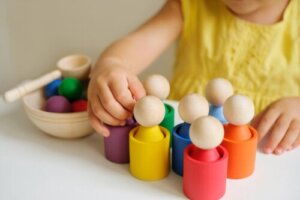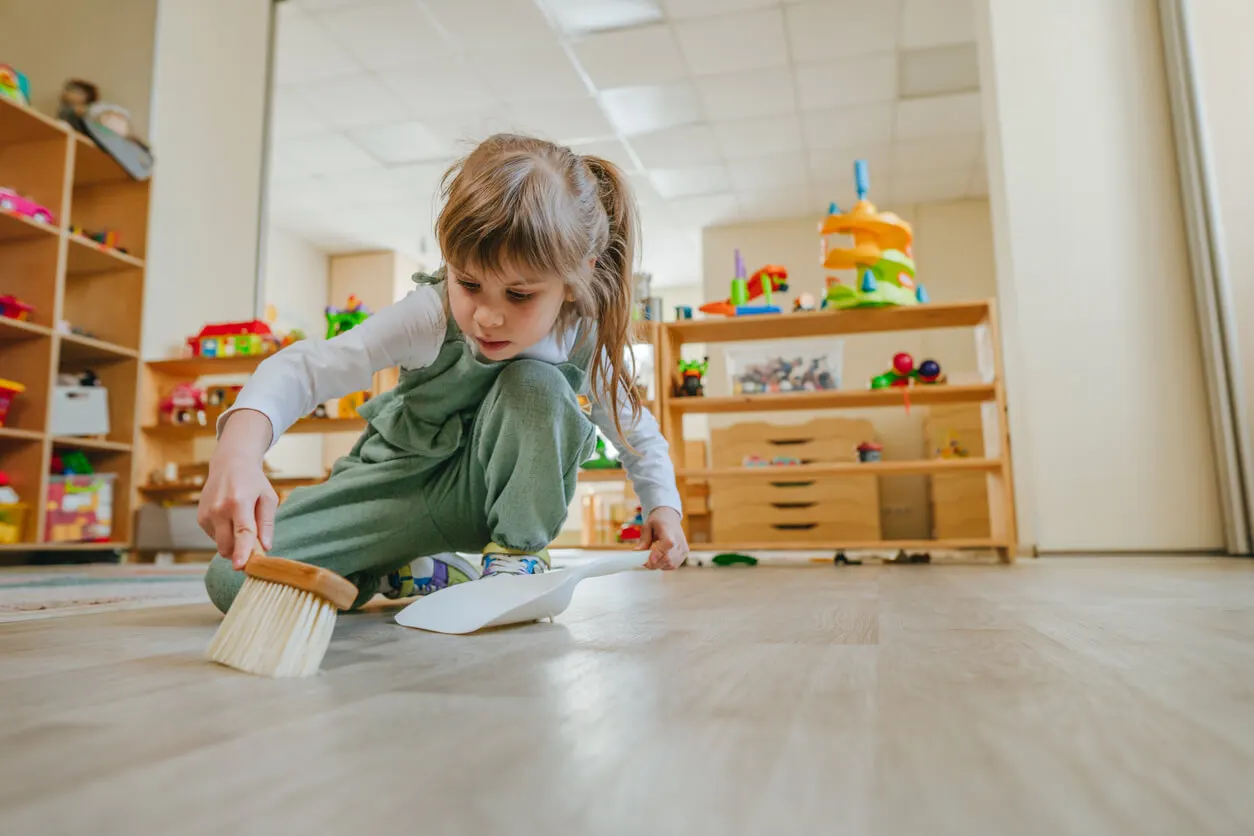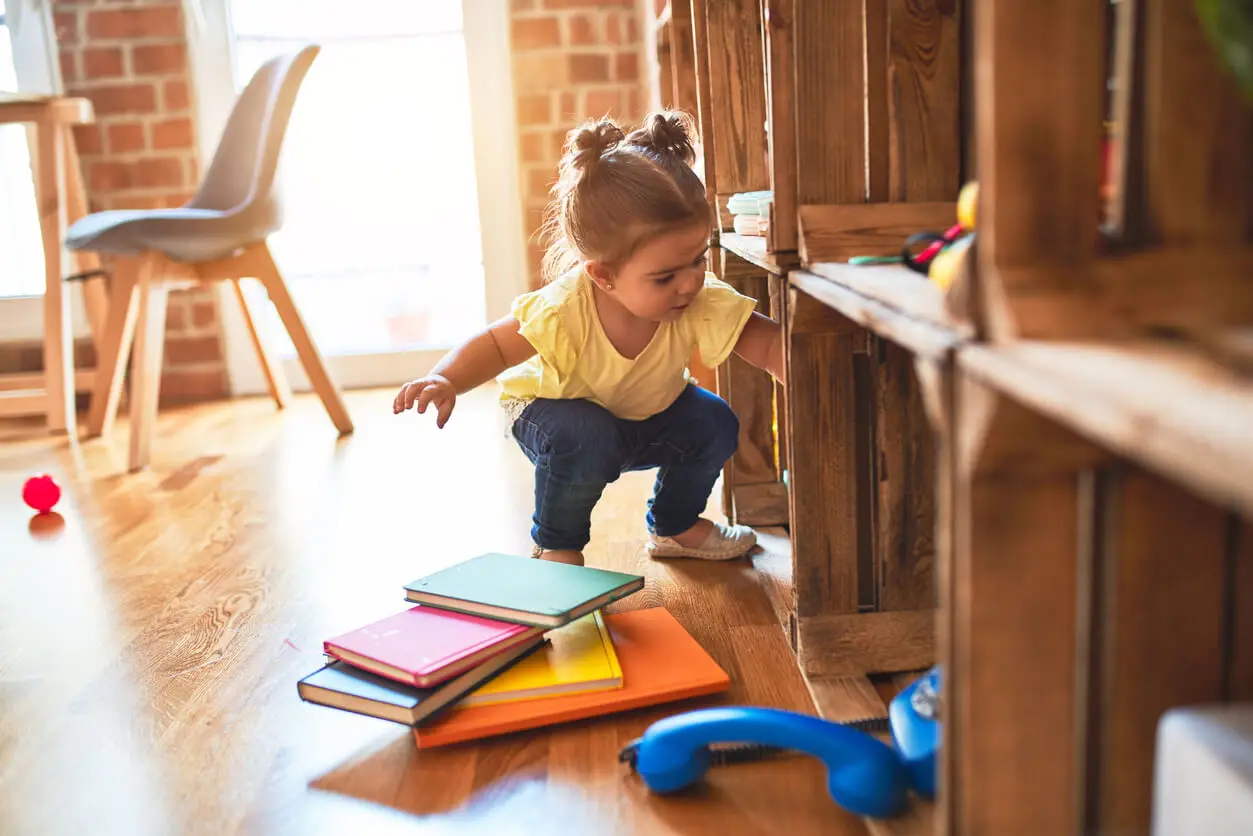Montessori Toys: Benefits and Uses in Early Childhood Education


Reviewed and approved by the psychologist Jose Padilla
The name of Montessori toys, as well as the homonymous method, are due to a renowned Italian physician, born at the end of the 19th century. Her contributions to pedagogy and theories about how children learn are considered fundamental.
Montessori toys, used in early childhood education, stimulate learning by encouraging children to investigate their environment on their own, in an environment of freedom. In turn, they help develop various skills, both cognitive and motor, and even social and emotional. Read on and we’ll tell you a little more.
Montessori’s pedagogical ideas
The Method of Scientific Pedagogy, the fundamental work of Maria Montessori, published in 1909, describes her approach to work in schools. The title was later changed to The Discovery of the Child, but retained the essence of the concepts.
- Each child learns at his or her own pace.
- Children have a natural inclination and motivation to want to learn. Therefore, the efforts of parents and teachers should be directed towards finding the best way to stimulate them.
- Due to the child’s absorbing mind, he/she explores and learns about everything around him/her, without limits, either consciously or unconsciously.
- Children go through several stages in their development. In this regard, the author considered three distinct phases: infancy (0 to 6 years), childhood (6-12 years) and adolescence (12 to 18).
- There are some sensitive periods, during which the children are more activated for learning language, motor or social skills.
- They can learn through play and action. This allows them to experiment with the elements in the environment, deducing from this various ideas about the world.
- They all want to act independently, so we must try to help them, but without overdoing it. Of course, knowing how to set limits for children when necessary.
Montessori’s pedagogical ideas still hold true today and are applied to the toys we will describe below.
Montessori toys: types and characteristics
The term Montessori toys is applied, in general, to elements designed with the explicit intention of stimulating some area of learning as well as to traditional objects and games that can be incorporated into pedagogical practice for such purposes.
These include puzzles, skates, bicycles, balls, cubes, dominoes, abacuses, musical instruments, kitchen utensils, clocks, and carts to disassemble.
Types
There’s a wide variety of toys marketed with this label, which are adapted to different ages. These options can be found:
- According to age groups: 0 to 6 months, 6 months to 1 year, 2 to 3 years, among others.
- For sensory stimulation: auditory (musical, rattles), visual (mobiles), tactile.
- According to their purpose: logic, expression, exploration, and socialization.
- For various modes of use: table, assembly or disassembly, action, crafts.
Characteristics
All these elements have or should have some characteristics, which are those that allow them to be considered Montessori toys:
- They’re made with natural materials. This is very important, because they’re objects that will be manipulated by children.
- They demand an action. In fact, if using the toy means that the child assumes a passive attitude, then they don’t comply with the fundamental principle.
- They allow for various forms or possibilities of use. Although the ideal thing is to apply them to develop one skill at a time.
- They’re similar to elements used in real life.
- They promote interaction between cognitive and motor skills.
- Children learn by exploring, but at the same time they have fun.
- They awaken and maintain the child’s curiosity.
Read more: Learn About the Stages of Language Development in Children

The use of Montessori toys in early childhood education
There are several considerations to keep in mind when using Montessori toys in early childhood education, so that they serve the purposes for which they were intended. Let’s look at some tips.
Space and company to play
Ideally, play should take place in a space where the child can act freely. Preferably outdoors, in contact with nature and, as far as possible, with other children.
For each stage a toy
Montessori toys are adapted to each stage of childhood. Remember that there are certain sensitive periods and, during these, the child pays more attention to certain stimuli, so you can take advantage to make the most of the resources.
Natural progression
In the same vein, the toys to be used should be in line with the degree of cognitive maturity, which means going from a lower to a higher difficulty of manipulation.
Different types of skills
Not all human beings have the same skills. It’s the same with children: some learn more easily by listening, while others learn more easily by watching.
It’s important to observe them to know if it’s better for them to interact with logical or more playful elements. Although, of course, all areas of learning should be stimulated: sensory, reading, mathematics, and motor skills.
Playing to explore
A fundamental characteristic of Montessori toys is that they entertain, but also stimulate learning. However, for this to occur, the child must be given the opportunity to use the toy and discover and explore on his or her own.
Reducing support
If freedom is limited and restricted, the possibilities for learning are reduced. In this sense, the adult should only present the toy to the child or even allow the child to choose it. But the fewer the number of instructions, the greater the interaction with the item.
Less is more
It’s suggested to present only one or a few items at a time, allowing for a long period of play, observation, and analysis, increasing concentration levels.
Letting their brain work
The rest is to sit, observe, and let the child’s brain work, building hypotheses about how things work. This includes allowing the child to take a car and decide if they should let it fly like an airplane, for example. Unless some inappropriate situation arises, such as a bump or an attempt to swallow, the adult should intervene as little as possible.

Benefits of Montessori toys
There are several benefits of using Montessori toys in early childhood education. For example, it has been observed that they help children develop greater self-confidence and problem-solving skills, according to a study on the Montessori method.
Other research mentions the use of a tangible toy to work with children with neurodevelopmental disorders, designed according to Montessori principles. It was demonstrated that this kind of element improves fine motor skills, providing multisensory stimuli.
In general, Montessori toys allow the child to work on the consolidation of various skills. Among others, the benefits attributed to them have to do with the improvement in the following areas:
- Emotional intelligence
- Creativity and artistic expression
- Sensory and motor development
- Improvement of social skills
- Autonomy and discovery of the environment
- Stimulation of memory, attention, perception, and concentration
- Support in the learning process of science, technology and mathematics
Read more: Childhood Influences the Development of Personality
Importance of play for life
Maria Montessori was born in 1870, in Chiaravalle, an Italian town located a few kilometers from the Adriatic Sea. She became interested in science, choosing a career in medicine. She was the first woman to graduate with a medical degree in the country.
Montessori’s pedagogical training was self-taught, as she reviewed practically all the works on education that had been written in previous centuries, from Rousseau to Pestalozzi and Froebel. With this, she gave shape to her theory, which is known as the Montessori method.
Thanks to her legacy, it’s clear to many teaching professionals that play is a determining factor in the development of different skills. When we’re adults we forget much of what we did in our early years. And, above all, we forget the way we learned in childhood.
If we want to help our children to grow healthily, we mustn’t only give them the space, the time, and the elements, but we also have to play with them. This will allow us to get closer to them and the child inside us.
All cited sources were thoroughly reviewed by our team to ensure their quality, reliability, currency, and validity. The bibliography of this article was considered reliable and of academic or scientific accuracy.
- Beccaluva, E., Riccardi, F., Gianotti, M. & Barbieri, J. (2022). VIC — A tangible user interface to train memory skills in children with intellectual disability. International Journal of Child-Computer Interaction, Vol. 32, p. 100376. https://www.sciencedirect.com/science/article/pii/S2212868921000799
- Espinoza Freire, E. (2022). El método Montessori en la enseñanza básica. Conrado, vol. 18(85), pp. 191-197. http://scielo.sld.cu/scielo.php?script=sci_arttext&pid=S1990-86442022000200191
- Garzotto, F., Gelsomini, M., Gianotti, M., & Riccardi, F. (2019). Engaging children with neurodevelopmental disorder through multisensory interactive experiences in a smart space. In: Soro, A., Brereton, M., Roe, P. (eds) Social Internet of Things. Internet of Things. Springer, Cham. https://doi.org/10.1007/978-3-319-94659-7_9
- Hernández-Soto, E. (2022). El juego, un método Montessori para la enseñanza del alumno. México: Acervo Digital Educativo. URL disponible en: https://ade.edugem.gob.mx/handle/acervodigitaledu/62430?show=full
- Moreno Romero, O. (2012). La pedagogía científica en María Montessori. Hojas y Hablas, vol. 9, pp. 59-67. https://dialnet.unirioja.es/servlet/articulo?codigo=6628806
- Sakaeva, L., Ismagilova, G. & Martynova, E. (2017). Peculiarities of child`s upbringing on the Montessori Method in Kazan (Russia). Edulearn17 Proceedings, pp. 5707-5713. doi: 10.21125/edulearn.2017.2296
- Tam, V., Gelsomini, M. & Garzotto, F. (2017). Polipo: a Tangible toy for children with neurodevelopmental disorders. Association for Computing Machinery, pp. 11–20 https://doi.org/10.1145/3024969.3025006
This text is provided for informational purposes only and does not replace consultation with a professional. If in doubt, consult your specialist.








